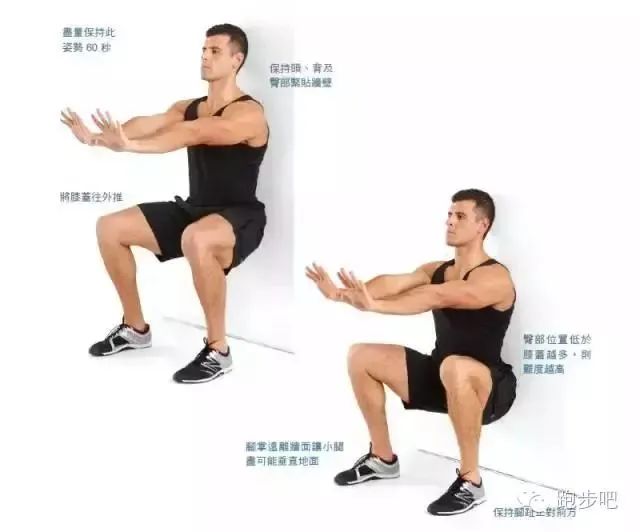It is not subject to other restrictions, and the site and time can be controlled according to your ability.
Although squatting against the wall is a good rehabilitation method to enhance leg strength and relieve knee pain, it is by no means the only way.
If the muscle strength is not enough, the excessive training load will be transferred to the joints and their soft tissues.
Therefore, most of the knee joint injuries caused by running are chronic overuse injuries, which is commonly referred to as running knee.
Incorrect running posture.
Muscle strength is not enough, training is not enough, and the ligaments and muscles around the knee are too weak, causing pain.
Squatting against the wall makes the knee strong.
It’s not good to practice too much.
Skillfully use elastic belt to maintain knees skillfully use elastic belt, a fitness gadget, which has elasticity by relying on “rubber belt”, can well control load, and is simple, safe and effective.
It’s important to keep your hands warm during winter sports, The thumb and index finger are specially designed for touch screen sensing, It doesn’t affect your control of your mobile phone! Scan the QR code below and buy it now ⭣ ⭣ ⭣ -.

Only practicing squatting against the wall is too single.
The knee joint consists of four bones (femur (thighbone), patella (kneecap), tibia (calf bone) and fibula (calf bone)), and is stabilized by the surrounding ligaments (patellar ligament, lateral collateral ligament, cruciate ligament and muscle quadriceps femoris (front of thigh) and hamstring muscle (rear of big leg).
Running is a sport we all love.
There are many kinds of knee pain, such as anterior knee pain (also known as patellar joint pain), patellar tendinitis, iliotibial tract syndrome (running knee), quadriceps femoris tendinitis, bursitis, etc., and these pain are mainly concentrated in the front and side of the knee.
Composition of knee joint knee joint is one of the joints with large load in various activities of human body, and it is also the most complex joint in human body, so the probability of injury is also high.
It also needs more diversified strength exercises, and the muscle training is richer and more comprehensive! The best depth of squatting against the wall should not produce obvious knee pain.

3.
4.
In the long run, the sports injury of the knee will occur.

Many runners never do strength training, but just run.
Running too much and not having enough rest will cause damage to articular cartilage and meniscus.
Because it is mostly used for warm-up and stretching, many physiotherapists will use elastic belt to help patients with rehabilitation training, Here are nine golden actions to protect and strengthen the knee with elastic bands: the above actions to strengthen the muscle strength of the knee will be helpful to protect the knee and rehabilitation, but please note that if you feel knee pain when doing the above actions, you must stop.
Wearing inappropriate running shoes.
Of course, the better the effect of practice.
However, it should be noted that the included angle between thigh and calf should not be less than 90 degrees.
It not only makes our body healthier, but also reduces pressure and makes our mood happier.

Squatting against the wall is the most respected sport in the industry to avoid knee injury and maintenance.
It is suitable for a wide range of people.
The main causes of knee injury are: 1.

The greater the squat range, the greater the muscle force, and the more prone to fatigue.


How to protect the knee from injury? What do we do if we don’t want to hurt the knee? The best way to prevent running knee pain is to strengthen muscle exercise.
2.
Why does running knee appear? When we run, the knee joint should not only bear the heavy pressure of weight, but also buffer the impact from the ground.
At the same time, you can practice with the wall.
However, long-term running is also easy to cause a lot of lower limb injuries, especially around the knee joint.
Of course, we should also learn to pay more attention to rest after running.
